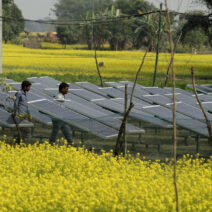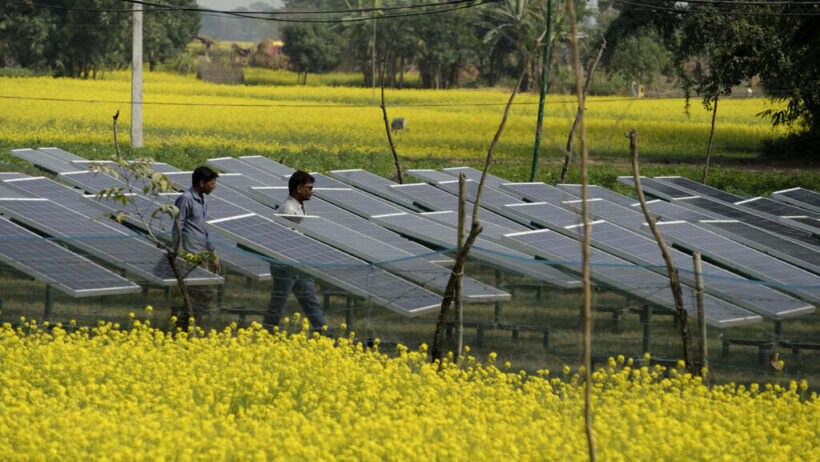The conservation of energy resources in India is a pressing concern, given the vast population and the increasing demand for energy. The country is grappling with the dual challenge of maintaining economic growth while safeguarding its environmental integrity. Dynamic policies, innovative grassroots initiatives, and empowered communities collectively serve as the cornerstone for an effective energy conservation strategy. Recognizing this intricate interplay can unveil the pathways toward a sustainable energy future.
First, it is essential to acknowledge the gravity of the situation. India is not only one of the largest consumers of energy globally but is also on a trajectory of exponential growth. With the National Energy Policy emphasizing self-reliance and sustainable development, India is positioned to adapt continuously to its malleable energy landscape. Yet, without deliberate energy conservation measures, both the economy and environment may falter.
Efforts to conserve energy in India can be encapsulated through three pivotal axes: policy formulation, community engagement, and technological advancement. Each of these elements interlinks to enhance energy efficiency, mitigate wastage, and ultimately foster a culture focused on sustainability.
Initiating with policies, the government of India has made commendable strides through regulatory frameworks aimed at optimizing energy consumption. The Bureau of Energy Efficiency (BEE) has established guidelines that mandate energy audits for various sectors, effectively highlighting inefficiencies and recommending remedial actions. Implementing a robust energy code for buildings can significantly curb energy usage, especially in urban settings where demand proliferates. Moreover, transitioning toward renewable energy sources through policies such as the Solar Parks Scheme will undoubtedly alleviate the pressure on conventional resources.
Nevertheless, policies alone are insufficient for meaningful change. They must be supplemented by active participation from communities—an ideal that aims to inspire grassroots movements dedicated to energy conservation. Collaboration between local bodies and citizens can foster innovative solutions tailored to specific regional needs. For instance, in Maharashtra, various cooperative societies have implemented rainwater harvesting and solar energy projects. These initiatives not only provide energy and water security but also illuminate the profound impact of community-driven solutions on broader conservation issues.
Within the complex fabric of society, education emerges as a vital instrument for energy conservation. Integrating sustainability into the school curriculum can create a generation of environmentally conscious citizens who recognize the value of energy efficiency. Programs like the ‘Energy Conservation Day’ can galvanize public interest and participation, enticing individuals to engage in energy-saving practices, such as switching to LED lighting, reducing reliance on air conditioning, or utilizing public transport systems to decrease fossil fuel consumption.
The role of technology in bolstering energy conservation cannot be overstated. The integration of smart grids with intelligent metering systems demonstrates how cutting-edge technological solutions can facilitate efficient energy distribution. Through real-time data analysis, both consumers and providers can optimize energy usage, identify spikes in demand, and rectify inefficiencies. Smart appliances also play a significant role, enabling households to automatically manage energy consumption based on predefined parameters. Ultimately, harnessing technology to not only monitor but also inform user behavior is central to energy conservation strategies.
A key observation in the discourse surrounding energy conservation is the interplay between power dynamics and energy accessibility. Marginalized communities often face restrictive access to energy resources, which can perpetuate a cycle of poverty and environmental degradation. As urbanization expands, it is imperative for policymakers to ensure equitable distribution of energy resources. This entails investing in microgrid technologies and localized renewable energy projects that empower underserved areas, promoting both energy independence and social equity.
On the corporate front, businesses play a prominent role in shaping energy conservation narratives. Many firms are now adopting Corporate Social Responsibility (CSR) initiatives that aim to foster sustainability within their operational frameworks. By implementing energy-efficient processes, utilizing renewable resources, and driving innovation, businesses can significantly diminish their carbon footprint. Collaborative projects, such as the Energy Efficiency Financing Platform, invite companies to invest in energy technologies that deliver both environmental benefits and tangible cost savings.
In tandem with government and community efforts, the role of non-governmental organizations (NGOs) in advocating for energy conservation must not be overlooked. These organizations serve as catalysts for change, bringing forth awareness campaigns and lobbying for cleaner energy policies. They often bridge the gap between policy and practice by educating communities about the importance of sustainable energy use, while also holding corporations accountable for their environmental impacts.
As India navigates through the labyrinth of energy conservation, it is incumbent upon each stakeholder to recognize their role. The amalgamation of policy, community engagement, and technology heralds the promise of a future where energy resources are conserved and utilized judiciously. Fostering a culture that prioritizes sustainability is not merely advantageous but essential for the longevity of both the ecosystem and the economy.
In summation, the challenge of energy resource conservation in India necessitates a concerted effort that transcends mere regulation. It requires an unwavering commitment from both individuals and institutions to catalyze a transformation towards a sustainable energy ecosystem. By aligning policies, empowering communities, and embracing technological advancements, India can pave the way for a future where energy is not only conserved but cherished as a fundamental component of life and society.






